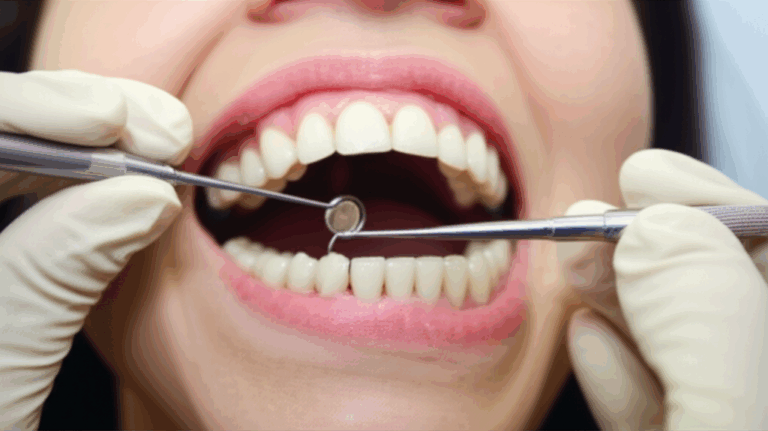
What Happens When You Get Dental Implants?
Your Friendly, Step-by-Step Guide to a New Smile
Thinking about dental implants can bring up a lot of questions. Will it hurt? What really happens during the dental implant process? Will I be able to eat normally again—or smile with confidence? If you’re here, you are likely looking at your options and want the full story, from the first meeting to the moment you bite into an apple again, worry-free.
You’re not alone. Dental implants have become a popular, trusted option for millions of people. The process can feel overwhelming if you don’t know what to expect. So let’s explain it—step by step, with all your questions in mind.
In This Article
Here’s what we’ll cover in your implant journey:
- Understanding Dental Implants: What are they and why might you want them?
- The Dental Implant Process: Every Major Step Explained
- Consultation & Planning
- Prep Work
- Surgery Day
- The Healing Phase (Osseointegration)
- Abutment and Crown Placement
- Aftercare & Living With Implants
- Risks and Problems: What You Need to Know
- Who’s a Good Candidate?
- Key Takeaways & Next Steps
1. Understanding Dental Implants: What Are They, and Why Consider Them?
Let’s start with the big question: What is a dental implant, really?
To put it simply, a dental implant is a small, strong post—usually made of titanium or zirconia—that a dentist or oral surgeon puts into your jawbone under your gums. It works like a new tooth root. After your jawbone heals around it (a process called osseointegration), this implant holds a new tooth (crown), bridge, or even a denture that is made just for you.
Why do people choose implants?
Because they give you a mix of benefits you can’t get anywhere else:
- They last a long time—Implants can last for decades, sometimes your whole life.
- They work well—You can chew, speak, and smile just like you have your own teeth.
- They protect your jawbone—Implants keep the bone strong, helping to stop the bone loss that often happens when you lose a tooth.
- They look natural—Today’s new teeth look very real.
Imagine having a single missing tooth. A traditional bridge might require shaving down healthy teeth, but an implant leaves them alone. If you’re missing many teeth or even all your teeth, new implant methods—like All-on-4 systems—can give you strong support for a full set of brand-new teeth. The bottom line? Implants are about more than just filling a gap—they’re about getting your confidence and your life back.
2. The Dental Implant Process: Every Major Step Explained
Getting dental implants is a process, but it’s less confusing and easier to handle when you know each step.
A. The First Step: Consultation & Planning
Think about planning a house. You wouldn’t start building without a plan, would you? Dental implants are the same.
1. Full Check-up
- X-rays, CT scans, and sometimes 3D imaging let your dentist see what’s going on under your gums. They’re checking your bone level and finding important things like nerves and sinuses.
- Your gum health is checked—healthy gums are needed for implants to work for a long time.
- Your health history is important. Problems like diabetes or certain medicines can change how you heal.
2. Making Your Plan
- How many, where, and what kind of implants you need.
- Will you need a bone graft or a sinus lift?
- Talk about costs, how long it will take, and any other questions you have. This is your chance to ask anything—there are no silly questions here!
Tip: If you want to see what digital planning can do, find out how a digital dental lab makes everything very exact.
B. Prep Work (When Needed): Getting Ready
Not everyone needs this step. But if your bone is thin or weak (which happens a lot when a tooth has been missing for a while), you might need some prep work.
1. Bone Grafting
Think of your jawbone as the “soil” for the implant “tree.” If the soil is thin, the tree won’t be strong. Bone grafts add bone to make the area stronger, using your own bone, a man-made material, or bone from a donor. Healing can take three to nine months—yes, it takes a while, but it’s very important for long-term success.
2. Sinus Lift
If you’re missing upper back teeth, your sinuses might be too close. A sinus lift adds bone below the sinus to make room (and support) for an implant.
C. The Main Surgery: Dental Implant Surgery
The big day! Sounds scary? It’s a simple, common surgery done by experts like oral surgeons or periodontists.
Here’s what usually happens:
You might leave with the implant showing, but usually, it’s hidden under your gums while it heals. Sometimes a temporary tooth can be worn so it looks better.
What to expect after?
Most people say they have some pain, swelling, and sometimes a little bruising or light bleeding. Pain medicine from the store or from your doctor, plus an ice pack, usually take care of it. Your dentist will send you home with clear instructions, including what to eat, how to clean the area, and things to avoid for the first few days.
D. The Waiting Game: Osseointegration (Healing Phase)
This word—osseointegration—means your jawbone and implant are growing together and becoming one solid piece. How long does it take? Usually, three to six months, depending on your health, bone quality, and where the implant is.
You’re not just waiting!
- Stick to soft foods (like scrambled eggs, yogurt, soups).
- Keep your mouth very clean—but only with gentle brushing and rinsing.
- Your doctor may give you a temporary tooth to wear for looks.
Why is this healing stage so important?
It builds the base. If you rush this, your implant can fail. It’s like putting in a strong foundation before you build a house!
E. Abutment Placement: Putting on the Connector
When your dentist says it’s time, you’ll have a small surgery to put the abutment (the “connecting piece”) on the healed implant.
- This usually just needs local numbing.
- The gum is opened, the abutment is attached, and a healing cap may be placed.
- Your gums will heal around the abutment in one to two weeks.
F. Crown, Bridge, or Denture Placement: The Final Tooth
You’re almost done! Now for the part you (and everyone else) will see:
Congratulations—you now have a new tooth (or teeth) that look, feel, and work like the real thing!
3. Aftercare & Living With Dental Implants: Taking Care of Your New Tooth
Your work isn’t over after the new tooth goes on. To keep your dental implants strong for many years:
- Brush and floss twice a day, just like real teeth. Your dentist may suggest special floss or brushes.
- Get regular dental check-ups and cleanings—implants need professional cleanings, too.
- Avoid bad habits: Don’t chew ice, use your teeth to open things, or bite down on very hard foods.
- Watch for warning signs: Getting problems checked early keeps them from getting worse.
Did you know?
Eating soft foods at first helps, but soon, you’ll enjoy most foods again, from crunchy apples to juicy steaks.
4. Risks and Problems: What Could Go Wrong (and How Often Does It Happen?)
No surgery is risk-free. For implants, problems don’t happen often but can include:
- Infection: Usually caused by poor cleaning or slow healing. It can be treated with antibiotics or small procedures.
- Nerve damage: Very rare, but can cause numbness or tingling if nerves are too close.
- Sinus issues: Mostly with upper implants if a sinus lift wasn’t done when it was needed.
- Implant failure: Happens most often in smokers or people with health issues that aren’t under control.
- Peri-implantitis: A type of gum disease around an implant, often from not cleaning well enough.
What makes success more likely?
- A dentist with a lot of experience,
- Good oral hygiene,
- Following all instructions.
With today’s methods, success rates are above 95% (and even higher for implants in the lower jaw).
5. Who’s a Good Candidate for Dental Implants?
Implant dentistry has gotten so much better that it can help most healthy adults. Here are the main things your dental team will check:
- Enough jawbone: If not, a bone graft can help.
- Healthy gums: No active gum disease.
- No health problems that are out of control: Diabetes or immune issues need special care.
- Non-smoker or willing to quit: Smoking makes your risk of implant failure two or three times higher.
- Good oral hygiene habits: You must be willing to take care of your mouth long-term.
Implants may not be the best choice if you have untreated gum disease, smoke a lot, or have certain health conditions. But new technology—like the kind from a specialized implant dental laboratory—is making success possible for more people than ever.
6. Key Questions & Myths, Answered
Let’s clear up some wrong ideas and answer common questions.
“Are dental implants painful?”
Most people feel much less pain than they expected. The area is numb during the surgery, and any pain afterward is usually handled with regular pain medicine. Any swelling or bruising is worst for the first couple of days.
“How long does the treatment take?”
From the first meeting to the final smile can be anywhere from a few months to over a year—especially if you need extra healing time for bone grafts or have many implants.
“Will I be able to eat, talk, and smile like normal?”
Yes. Implants become a part of you. You’ll eat, laugh, smile, and speak freely.
“What happens if the implant fails?”
It’s rare, but if an implant doesn’t join with the bone (osseointegration), another surgery or a different option is almost always possible. Your dentist will help you every step of the way.
7. Benefits of Dental Implants: More Than Just a Tooth
Implants have many special benefits over other options:
- Chewing and speaking: Implants get your chewing power back, so crunchy vegetables and juicy steak are on the menu again.
- Confidence: No wobbly dentures, no hiding your smile.
- Look younger longer: Implants keep your jawbone healthy and your face shape natural.
- Lasts a long time: With good care, they often last longer than bridges or dentures—sometimes for life.
8. Comparing Your Options: Implants vs. Bridges vs. Dentures
Wondering how implants compare?
- Removable dentures might wobble and need glue.
- Bridges often mean you have to damage healthy teeth for support.
- Implants protect your own teeth, join with your jaw to be strong, and don’t get loose.
Explore more comparisons in our guide to dental problems, or understand implant differences in our dental implant resource.
9. Quick Facts and Numbers
Here’s what the numbers say:
- 95-98% implant success rates (lower jaw; 90-95% for upper jaw)
- 3-6 months for the bone to heal around the implant
- 20+ years lifespan—sometimes a lifetime!
- Cost per implant: $3,000-6,000+ (changes based on how hard the case is)
Are you a smoker? The failure rate goes up (two to three times the risk). Proper cleaning and quitting smoking helps your chances of success.
10. Your Healthy Takeaway: The Power Is in Your Hands
In summary:
- Dental implants are like your own teeth in how they look and how strong they are.
- The process takes planning, time, and good care—but the final result is worth it.
- Most people only feel some minor pain after surgery.
- Regular dental visits and great cleaning are the most important things for healthy implants.
- Talk to your dentist honestly about your health history and what you want.
- If you are a good candidate, implants can give you years of comfort and use.
Your Action Plan
Remember—there’s no such thing as a silly question in the dentist’s chair. A new smile is closer than you think, and you’re just one good decision away from getting there.
Still curious or ready to start?
Don’t wait to set up a meeting with a dental professional. Your best smile could be just around the corner!
References & Additional Reading:
- American Dental Association (ADA)
- American Academy of Periodontology (AAP)
- Clinical studies on osseointegration and implant longevity
This guide was written to give you clear, helpful information about your dental health. Just helpful information, no ads.








